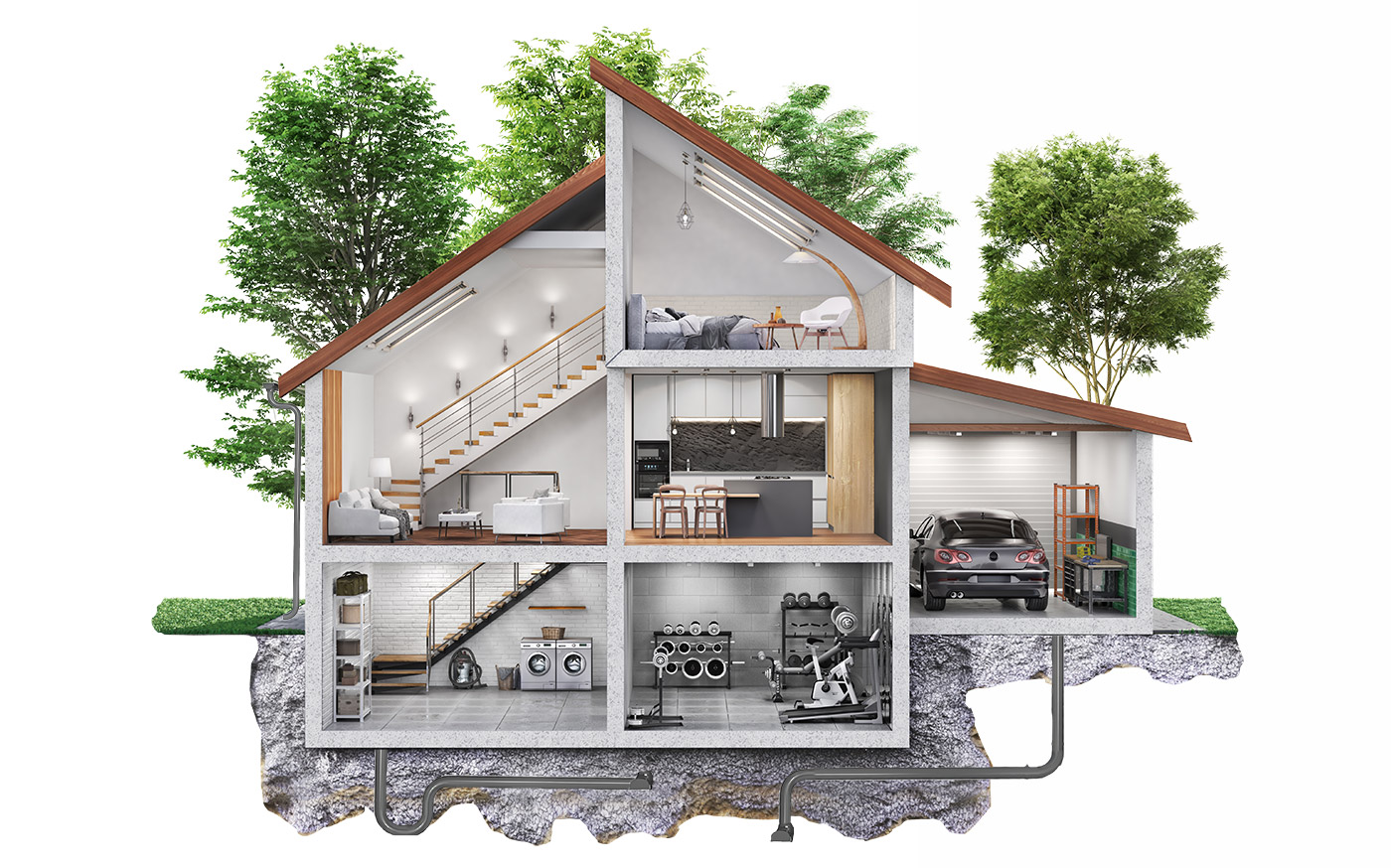Safety Tips
Call us today!
Protect your home from Basement Flooding
>$1 billion
The total of insured sewer backup damage in homes from just two events in 2013, the southern Alberta flood and the Toronto flood.
Along with damaging property, basement flooding can cause long-term health impacts to you and your family. The following provides info on key areas that may require attention in order to reduce the risk of basement flooding to your home.

Contact your local government to determine what you should do to reduce your risk of basement flooding.
1 of 7Disconnect your downspouts where appropriate and direct rainwater safely away from your and your neighbours’ home.
2 of 7Do not pour fats. oils or grease (FOGs) down your drain.
3 of 7Install and maintain sanitary backflow protection (eg. like a normally open backwater valve).
4 of 7Ensure your sump system is equipped with a backup pump and a backup power supply and is operating well.
5 of 7Do not store valuables of irreplaceable items in your basement.
6 of 7Ensure that the soil around your foundation slopes away from your home.
7 of 7
Use roofing products with the Underwriters Laboratories UL 2218 Class 4 impact resistance rating.
1 of 7When re-roofing, install full roof underlayment, preferably self-adhering waterproofing underlayment (a.k.a. ice-and-water shield).
2 of 7Purchase a home with a steeper sloped roof as flatter roofs are more vulnerable to hail damage.
3 of 7For skylights, windows and doors, use products made to withstand high debris impact such as those with a ‘Miami-Dade’ impact resistance rating.
4 of 7Use brick cladding or cement board (a.k.a. fibre or Hardie Board) siding in place of aluminum or vinyl.
5 of 7An alternative are window safety films which are readily available at most home renovation stores.
6 of 7Whenever possible, keep your vehicle parked under permanent cover (garage or carport).
7 of 7Protect your home from Hail
$1.6 billion
Insured losses caused by just three Alberta hailstorms (2010, 2012 and 2014).
Hail has affected every province and territory in Canada. The following provides info on key areas that may require attention in order to reduce the risk of hail damage to your home.
Protect your home from Wildfire
$4.9 billion
Insured losses from just three major wildfires (Kelowna, BC, 2003, Slave Lake, AB, 2011, and Fort McMurray, AB, 2016).
An average of 8,000 wildfires burns an average of 2.5 million hectares of forest each year in Canada. The following provides info on key areas that may require attention in order to reduce the risk of wildfire damage to your home.

Remove all trees, long grass, shrubs, logs, branches, twigs and needles and cut and water grass within 10 metres of structures.
1 of 7Install spark arrestor screens on chimneys.
2 of 7Thin trees (with three to six metres between crowns) for at least 30 metres from house.
3 of 7Use only fire retardant roofing rated Class A, B or C and fire resistant exterior siding.
4 of 7Enclose all eaves and screen all vents, including soffits.
5 of 7Enclose undersides of wood balconies, decks and crawlspaces with flame resistant materials.
6 of 7Store fire wood and propane tanks at least 100 metres away from structures.
7 of 7
Make sure exterior cladding (siding and roofing) is rated for severe winds.
1 of 9If you have a gable roof, check to see if it is property braced.
2 of 9Purchase shutters to protect windows from airborne debris.
3 of 9 Ridge vents and soffits should be tightly connected to the roof. 4 of 9Make sure connections between columns and porches or overhangs are adequately secured.
5 of 9Securely anchor any outdoor accessories. For example, air conditioners or utility sheds.
6 of 9If you have a double door, install a heavy duty bolt, or slide bolts at the top and bottom of the inactive door.
7 of 9Doors should be pressure and impact rated.
8 of 9Check your garage door to see if it is pressure rated.
9 of 9Protect your home from Severe Wind
$19 billion
The number of tornadoes that touched down in Ontario on August 20, 2009, a Canadian record. Up to 600 homes were damaged.
Canada experiences all types of extreme wind events, from regular flat line winds and microbursts to tornadoes and hurricanes.
The following provides info on key areas that may require attention in order to reduce the risk of wind damage to your home.
Content Source: http://www.iclr.org/
you need someone in your corner
We can do that.
Are you interested in booking a personal consultation in our office or in your home? Direct-Line Insurance Agents are here to help. It’s easy to get in touch with us.

PREFER TO SPEAK IN PERSON?
Schedule a personal consultation
Get the value you deserve from an independent insurance broker. Give us a call to speak with a locally based agent.
